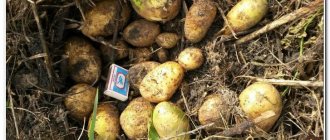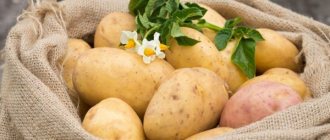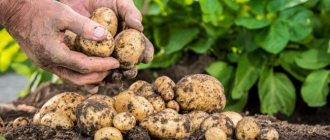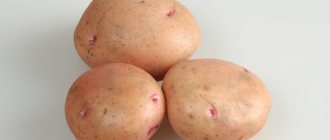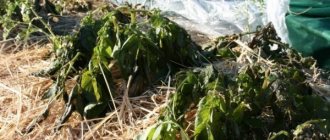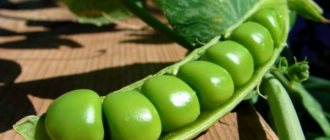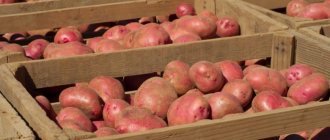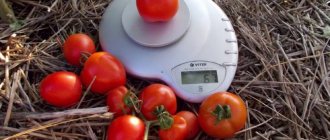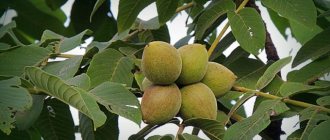Many experienced vegetable growers and gardeners increasingly prefer hybrid potato varieties. The Dutch table variety Colombo (Colomba) is particularly popular. It is successfully grown in summer cottages and large plantations for sale. Colombo is characterized by excellent taste, high yield, transportability and keeping quality, and early ripening.
General information about the Colombo variety
The Colomba potato variety was bred in the Netherlands, obtained by crossing two local varieties Agata and Carrera. It has long been grown successfully and in large quantities in Finland, which is why Colombo is mistaken for a Finnish species. It is popular in Russia and Ukraine in places with warm and temperate climates. Colombo is zoned for cultivation in such Russian regions as:
- Volgo-Vyatsky district;
- Chernozem region;
- North Caucasus;
- Central District;
- Northwestern region.
Colombo is a mid-early variety, its growing season is 60-65 days. But already on the 45th day after germination, you can reap the first benefits. With early digging, the variety gives a yield of 1 to 3 kg per square meter. Young tubers are high in vitamins. If you wait until technical maturity (65-75 days), when the bush begins to dry, you will be able to collect from 3 to 4.5 kg of potatoes per square meter of land.
As a rule, seed material is planted in May and young tubers are dug up in July. In the southern regions, it is possible to obtain two Colombo harvests per season.
Proper crop care
Colombo potatoes are one of the most unpretentious varieties. In order to get a high-quality harvest, you only need to water it and hill it a couple of times.
Irrigation
Colombo is responsive to watering. There is a standard irrigation scheme developed by professional gardeners:
- It is not recommended to water the tubers before the tops appear.
- The first watering should be carried out after the formation of the green part of the crop, when it gains a height of about 10-15 cm.
- The second watering is carried out at the moment the flowers bloom.
- And the third, final watering is carried out before the end of flowering.
It is not recommended to water potatoes after they have bloomed, since in this case there is a high probability of developing late blight.
Hilling
Hilling is the most important procedure that allows you to perform several functions at once:
- Enrich the soil with oxygen, thereby increasing productivity.
- Remove grass from the area.
- Protect the tops from falling to the ground, thereby preventing the green part from drying out prematurely.
This procedure is performed twice per season. The first time was when the tops rose by 25-30 cm. The second time was 2-3 weeks after the first procedure.
Fertilizer
If the soil is fertile, then there is no need to fertilize the potatoes. On the contrary, too much organic matter can only make it worse.
The only fertilizer you can’t refuse is autumn fertilizer. It is carried out after the harvest has been harvested and the area has been cleared. Together with the addition of humus or wood ash, the soil is dug up and prepared for wintering. In spring, the soil will be saturated with nutrients and will “kindly” accept planting material.
We recommend reading: “Description of the Jelly potato variety”
If the soil is heavy, then you will have to carry out “direct” fertilizing, directly into the hole while planting the tubers. Before immersing the root crop in the hole, wood ash is added to it. If it is not there, humus can be an alternative.
Description and characteristics of the variety
Hybrid potatoes Colomba are planted in open ground. The variety forms a bush about half a meter high, which can be spreading or erect. The color of the leaves is green with an emerald tint, and the flowers are light lilac. The skin of the hybrid tubers is amber in color and thin. The eyes are shallow and small – up to 0.2 mm. The pulp is yellow or creamy.
General characteristics of the variety:
| Index | Description |
| Peel | quite thin, with an amber color |
| Eyes | small |
| Pulp | has a cream color |
| Form | elongated oval |
| Starch | 12-14 % |
| Average tuber weight | 70-130 g |
| Bush | straight, spreading, height 55 cm |
| Flowers | white with lilac tint |
An average of 12 tubers grow on one nest; they are large and even, of regular (round or oval) shape. The weight of each fruit is up to 130 g, depending on the number of fruits on the bush. There are few small potatoes, and this determines the high commercial quality of Colombo. Potato slices do not fall apart and retain their shape during heat treatment (frying, boiling).
The table variety is suitable for preparing any dishes. Due to the low starch content (within 11-15%), fluffy mashed potatoes will not work. But from this variety you can prepare:
- potato pancakes;
- homemade chips;
- soups;
- casserole;
- French fries, etc.
Landing Features
This variety has no special requirements for the composition of the soil and can grow in any climate zone. The main thing is to set aside a sunny area for it. It is best to plant in May, then the earth will have time to fully warm up.
One month before planting, it is necessary to germinate the tubers
A month before planting, it is necessary to germinate the tubers. To eliminate the occurrence of diseases as much as possible, you need to dip the tubers or spray them with a weak solution of potassium permanganate. And a week before planting, the planting material is moved to a shaded place. With such preparation, the crop becomes more resistant to temperature changes, diseases, pests, and seedlings appear about 10 days earlier.
The holes for planting are made 5-15 cm deep, depending on the type of soil (it is easier for potatoes to germinate in soft soil). The distance between the holes is 25-35 cm. The row spacing is 70-100 cm. And to make even rows, you can stretch a thread or a bright-colored fishing line from one end of the area to the other - and make even rows along it. When planting, it is recommended to pour a handful of wood ash or a little crushed egg shell into each hole.
Advantages and disadvantages of the variety
Everyone who is familiar with the Colombo variety notes its excellent taste. The texture is dense, the potatoes do not boil over. There are other advantages of the hybrid, which include:
- Attractive presentation of the fruit. This ensures high sales volume for Colombo.
- Easy to care for.
- Resistant to temperature changes, dry periods and diseases.
- Precocity.
- High yield, reaching up to 40 tons per hectare.
- Colombo has good keeping quality - up to 95%.
Experienced gardeners point out one drawback - it is important to observe special storage conditions to ensure good shelf life of the root crop. Potatoes lie for a long time at a temperature of 2 to 4 degrees, preferably in a dry cellar where good ventilation must be ensured. In this form, the product will last until the beginning of spring, and it can be used for food, but it is problematic to preserve planting material, especially in a poorly equipped basement.
Colombo potatoes: characteristics
The Colombo variety is the result of the work of Dutch breeders. It was entered into the Russian State Register in 2013, and both amateur gardeners and professional vegetable growers immediately liked it. These potatoes are valued for their early ripening, stable quality and excellent presentation (all nodules seem to be aligned to the standard).
The hybrid's bushes are erect, but in some cases they can spread out on the ground. It depends on the growing conditions. The stems are tall, with good growth reaching 50 cm. The leaves are large, rich green. The flowers are also quite large, beautiful, pleasing to the eye with a whitish-lilac hue. The fruits have an elongated shape, but they almost never have time to form due to the short growing season of this crop.
Colombo is a super early table variety that fully ripens in just 50-65 days from the moment it is planted in the soil. Moreover, it is not at all necessary to wait two months; the tubers are filled and ready for use on the 40th day.
The variety is not picky about soil composition and adapts well to different climatic conditions. It is successfully grown in forest-steppe and mixed forest zones. It has stable productivity. From one bush you can collect up to 12 potatoes with an average weight of 100-110 grams, and from an area of 1 hectare - 230-420 centners of selected potatoes. This is quite a high figure. For comparison, let's look at the yield of other similar varieties.
| Variety | Productivity |
| Minerva | 200-450 c/ha |
| Zhukovsky early | up to 400 c/ha |
| Farmer | 220-430 c/ha |
| Forty days | 200-300 c/ha |
| Riviera | 280-450 c/ha |
| Meteor | 180-390 c/ha |
| Veneta | up to 300 c/ha |
As for storage, if all rules are followed, shelf life is 95%. For an early variety, this is very good; not everyone can boast of such keeping quality.
Experts recommend growing Colombo in regions such as Central, Northwestern, Central Black Earth, Volga-Vyatka and North Caucasus, but, as practice has shown, in other regions of the Russian Federation it also acclimatizes well and produces high yields.
How to grow and care for potatoes?
The variety's agricultural technology is simple and standard, but has its own characteristics. To get a good Colombo harvest, you need to study the rules of its cultivation and follow the recommendations of experienced farmers. The Finns have achieved success in growing Colombo potatoes and advise carrying out the following manipulations before planting:
- tuber processing;
- soil preparation.
Seed preparation
Before planting, you need to take care of the quality of the seed material. Previously - a month and a half before planting - the tubers are germinated. They are laid out in a dry, bright place, the temperature in which ranges from 13-20 degrees. You can place the fruits in a box where the first shoots will appear under the sun and warm air. If the air in the room is too dry, it must be humidified and the tubers should be sprinkled with water.
After 10-14 days, the fruits are brought to a colder temperature - about 10 degrees. This is how they are stored until disembarkation.
If the diameter of the tuber for planting is more than 5 cm, it should be cut into pieces with pulp and sprouts (2-3). To avoid rotting, each half must be dried for 4-5 days and then planted.
Another germination option is wet. The method involves storing seed potatoes in a dark room where the temperature does not exceed 15 degrees. The tubers are placed in boxes or boxes, covered with sawdust or damp soil. The substrate must be regularly moistened; after 2-3 weeks, shoots will appear, and the sprouted fruits can be planted in open ground.
It happens that the tubers do not wait for planting and begin to sprout vigorously. Then you can use the seedling method:
- Wait until the sprouts gain strength, the beginnings of roots appear at their base, and the length of the sprouts themselves reaches 6 cm.
- Carefully separate each root from the tuber and place in the nutrient mixture.
- The distance between sprouts should not be less than 5 cm.
- Once strengthened, the seedlings can be immediately planted outdoors.
Before planting, it is recommended to treat potato tubers with special products that contain stimulants and agents that protect against diseases. Colombo is an excellent variety, highly resistant to potato blight and golden nematode, but prevention will not hurt. You can also treat the soil with a disease control agent before planting tubers.
Site selection and soil preparation
Despite being unpretentious in care, Dutch potatoes are demanding on the quality characteristics of the soil. It prefers fertile, light soils with high breathability for the development of the root system.
Colombo does not tolerate waterlogging well; the tubers can rot. If groundwater is close to the planting site, preference should be given to planting on ridges 40 cm high or using the ridge method.
Potatoes grow well on:
- sandy loam soils;
- black earth;
- loams (light);
- drained peat bogs with acidity less than 5-7 pH.
If the soil is acidic - this can be determined by the presence of indicator plants such as buttercups and horsetail - the potatoes will not be able to receive nutrients from it, its microbiological activity is suppressed. You don't have to look elsewhere. The soil can be normalized by adding lime, wood or peat ash (up to 15 kg of ash per 100 square meters).
Colombo potatoes do not grow well in virgin soil. Also, you should not plant it in areas where tomatoes or grains previously grew. The best predecessors of potatoes are cabbage, peas and beans, pumpkin crops, and herbs. All nuances should be taken into account when choosing a landing site. The selected area should be well illuminated by the sun, the soil should warm up, and the soil should be thoroughly prepared before planting - free from weeds, dug up, and fertilized.
On swampy soils or clay, it is advisable to prepare high beds in the fall so that they warm up in early spring.
Box beds
If a small area is planned for planting, you can plant potatoes in boxes. This method is suitable for Colombo and has several advantages:
- does not require regular digging;
- reduces fertilizer costs;
- makes it easier to weed beds;
- convenient when it is necessary to propagate the variety.
Potato tubers are planted in box beds, which are made of 4 boards. The boxes have no bottom and are pre-impregnated with an antiseptic. The boxes are placed on the beds and filled with soil, then potatoes are planted in them. It must be remembered that raised beds require abundant watering. Several boxes (10-20) will provide the family with a good harvest for the whole summer.
Combs
Another good option for landing Colombo is on the ridges. This way the soil is easily warmed up and ventilated - just what this variety loves. Combs 12-16 cm high are cut in the fall. The distance between each wave is about 50-60 cm, they are oriented from north to south (as with other landing options). Organic fertilizers, especially manure, decompose slowly, so it is recommended to apply them in the fall as well. The optimal amount of manure is 3 kg per square meter. In spring you can add humus.
When and how to plant?
Colombo potatoes, like many other varieties, do not like cold. It is recommended to plant it in open ground when the soil is already sufficiently warmed up. This is the end of April - May. If you plant tubers earlier, difficulties will arise. The following temperatures are recommended for planting Colombo:
- soil at a depth of 10 cm at least 7 degrees;
- for the formation of tubers - from 11 degrees and above (up to +17).
The second crop is planted after the first harvest - in August. Then by mid-October you can get a new portion of delicious potatoes. This is possible in warm regions of the country, where the temperature is still comfortable in the autumn months. Colombo is successfully grown in the South-East of Russia and the Sumy region of Ukraine. Favorable climatic conditions and soil composition are optimal for cultivating potatoes of this variety.
Planting holes should be dug at a distance of 30 cm from each other. The depth of each is about 7-10 cm. When it is necessary for potatoes to germinate faster, they should not be planted deep. At the same time, there should be free space between the beds - at least 50-70 cm, on average this is 3 holes per 1 meter. Subsequently, spreading bushes will appear, which should have enough sun. The subsequent scheme of action is as follows:
- Sprouted tubers or seedlings are placed in the holes (in accordance with the chosen method).
- Fertilizer is added - 250-300 g of ash or humus.
- Each hole is covered with earth; the height of the embankment should not exceed 5-8 cm.
- You can cover the seedlings with film or agrofibre so that seedlings appear faster.
Care and growing process
The Colomba variety requires standard potato care: it must be hilled and harrowed on time, monitor soil moisture, avoid the appearance of scab and diseases, and promote pest resistance. No special skills are required when caring for Colombo potatoes, but some points are important to consider when taking care of the crop even before it appears.
Before emergence, approximately 5 days after planting, the soil is harrowed. Repeat the procedure 2-3 more times until sprouts and after they form on the surface. Surface loosening of the soil is also carried out between the rows, which is necessary to aerate the soil and get rid of weeds.
Weeds must be removed regularly, preferably after watering or rain.
After the seedlings have appeared and reached 15 cm in height, the first hilling is carried out. Subsequently, it is recommended to carry it out once every 2 weeks, but at least 3 times per season. If there is a threat of severe frost, sprouted bushes can be hilled up to the very top - “from the top,” as gardeners say.
The benefit of hilling is that the roll of soil around the roots increases, which contributes to abundant tuber formation. On heavy soils, it is recommended to additionally loosen the soil once a week, avoiding the appearance of a crust on the surface.
Strong shoots (from 15 cm) need regular watering. Smaller sprouts are considered weak; moisture can trigger the process of rotting. When caring for the Colombo variety, it is important to follow the following watering rules:
- Use water heated to air temperature. To do this, you can place the watering can in the sun for several hours.
- The optimal amount of liquid is 4 liters per potato plant. The soil should be moistened to a depth of 20 cm.
- To avoid washing out the roots, do not pour out more than one liter at a time.
- Depending on the periods of plant growth, it is necessary to adjust the amount of watering. When buds form on the bushes, the volume must be increased by 1-2 liters per bush.
- Potatoes should be watered once a week in moderate temperatures and humidity and 2-3 times a week in hot weather.
The fastest and least expensive method of watering is along the furrows that appear during hilling and lead along the line of planting the tubers.
When watering, it is important to apply fertilizers and fertilizing. Colombo needs them throughout its growth period. The first ones can be started a month after planting. The most effective way is to apply fertilizer at the roots of plants. To do this, drive a stake between two bushes to a depth of about 20 cm, remove it, and pour the prepared solution into the resulting hole. Potatoes will independently take the required amount of nutrients from the soil.
What fertilizing and fertilizers are suitable for Colombo:
- chicken manure diluted in water (1:2);
- swamp silt, mud;
- ash;
- green manure – clover, mustard, lupine.
A specialist will tell you more about how and what to feed potatoes:
Pest and disease control
Colombo is quite resistant to many diseases, but is still susceptible to pests. It is important to regularly inspect the plantings in order to promptly identify the disease and take appropriate preventive or treatment measures.
This table shows common potato diseases and the level of resistance of the variety to them.
| Disease | Disease resistance (maximum 9 points) |
| Common scab | 6.5 points |
| Late blight | 6 points – tubers 4 points – tops |
| Drought resistance | 5 points |
If late blight is detected, damaged plants are burned and the rest are sprayed with a copper-containing fungicide. In other cases - when pests appear - less radical measures are effective:
- You will have to get rid of the cockchafer larvae manually. They are discovered during loosening and hilling.
- To prevent the appearance of click beetle larvae, Barguzin in granules is added to the soil when planting.
- The Colorado potato beetle, the main enemy of potatoes, is also harvested by hand. For preventive purposes, the lower surface of the leaves is treated with Actellik or Alatar.
Colombo potatoes also need to be treated for fungal diseases. For this purpose, drugs such as “Ditan M-45”, “Epin”, “Krezacin” or a solution of copper sulfate are used.
It is important to remember that the treatment of plants with chemicals is carried out in calm weather. It is advisable to do this early in the morning or late evening and be sure to follow safety precautions: use protective equipment, wash your hands thoroughly after the procedure.
Diseases and pests
The Colomba variety is resistant to golden nematode and potato cancer, but is often affected by late blight. Modern varieties of late blight can appear very early, as early as June, so it is important to regularly inspect the plantings for timely detection of the disease!
Prevention and protection measures against diseases and pests (table)
| Name | How to recognize | Prevention measures | Corrective measures |
| Late blight | Brown spots appearing on leaves and tubers |
| When late blight appears on the leaves, immediately spray with any copper-containing fungicide |
| Chafer | Adult beetles feed on tree leaves, while their thick white larvae feed on roots and tubers. | There are no effective chemicals against the cockchafer yet; the only solution is the mechanical destruction of the larvae that come across when digging up the area and shoveling compost heaps, where they accumulate especially many | |
| Click beetles | They are harmed by tough and very mobile larvae (wireworms) that feed on roots and tubers. |
| When planting, add Barguzin granules to the soil. |
| Colorado beetle | Bright black-and-yellow striped beetles and red-orange larvae quickly eat potato leaves | Manual collection of beetles and larvae. In small areas, it is very effective to destroy the oviposition of the Colorado potato beetle, located on the underside of potato leaves. | If a pest is detected, spray with Actellik or Alatar, especially carefully treating the lower surface of the leaves. |
How to recognize a pest (photo gallery)
First, late blight appears on the leaves as brown spots.
Tubers affected by late blight turn brown and rot
Adult chafers feed on tree leaves
The voracious larvae of the cockchafer are very dangerous for potatoes.
Adult click beetles do not touch potatoes, but their wireworm larvae are very dangerous
Tough and very mobile wireworms (larvae of click beetles) gnaw tunnels in potato tubers
The Colorado potato beetle is the most widespread and dangerous pest of potatoes.
The voracious larvae of the Colorado potato beetle can leave potatoes completely without leaves, and therefore without a harvest.
Destruction of Colorado potato beetle oviposition is the most effective and environmentally friendly way for small areas
Harvest and storage
You can harvest Colombo without waiting for the tops to turn yellow. You can determine the degree of maturity by digging up one bush and carefully examining the tubers. Their diameter should be 3-5 cm. If less, the potatoes are not yet ripe, if more, they are overripe.
There is a way to speed up the ripening process of tubers. To do this, the ground part of the bush is cut off in advance, about a week before the scheduled collection date.
During the harvesting process, it is necessary to select sick, affected tubers and put them aside. They should not be stored together with healthy ones to avoid infection. Good fruits must be dug up and left to dry in the beds for several hours. With this simple manipulation you can achieve the following:
- avoid fungal diseases of tubers;
- contribute to roughening of the skin.
Before storing fruits, they should be carefully sorted and cleaned of dirt and grass residues. Damaged tubers should be eaten immediately - they will not last long. Colombo is praised by many for its keeping quality. It can be transported over long distances, easily withstands shock, and in cool vegetable stores, where the temperature is maintained within 1-3 degrees, it can easily be stored for up to six months.
At home, optimal storage conditions can be created in containers and boxes placed on the balcony or basement. Temperature and humidity must be appropriate:
- air temperature not higher than + 4°C;
- humidity indicators – 75-80%.
Advantages and disadvantages
Colombo potatoes have many positive qualities, but they also have some weaknesses. The positive ones include:
- super early formation and ripening of tubers;
- possibility of growing twice in one season;
- excellent presentation;
- good keeping quality and ability to withstand long-term transportation;
- unpretentiousness to soils and natural conditions;
- universal culinary purpose;
- high immunity to the most common potato diseases;
- possibility of harvesting, packaging and transportation by technical means (tubers do not darken or get damaged).
There is only one negative characteristic - low resistance to fungal and bacterial diseases. To avoid infection, it is necessary to remove the tubers from the ground in a timely manner. It is advisable to harvest no later than 60 days from planting.
Reviews from gardeners
Vegetable growers often leave positive reviews about the Colombo variety. It is grown both on large plantations (for subsequent sale) and “for oneself” on homestead plots. By all accounts, this variety is unpretentious and provides good yield.
★★★★★
Elena, Volzhsky. We have been planting the Colombo variety for the third year now and are pleased with the harvest.
We use natural fertilizers, but in general, this crop is unpretentious. I like these potatoes because they don't get soggy when cooked. It makes excellent first and second courses. ★★★★★
Evgeniy, Tula. We planted this variety of potatoes on our summer cottage.
The first fruits were reaped already in July. All the tubers are smooth, beautiful - just like a selection! And what delicious potato pies my wife bakes! ★★★★★
Zinaida, Tambov. I decided to try a new variety and bought a kilogram of Colombo for seeds.
The harvest ripened quickly; by day 50 we were already feasting on young potatoes. Each bush yielded 10-15 tubers, all large and neat. I also really like the taste: not watery, soft potatoes. Hide
Add your review
The Colomba variety is a striking example of modern selection. When breeding it, we tried to take into account all the nuances and features of this culture. Dutch potatoes are productive, ripen early, are stored without losses and are resistant to many diseases. Colombo has practically no shortcomings. Its main advantage for all housewives is that it makes delicious dishes. Anyone can grow this variety in their summer cottage, even without gardening experience.
0
0
Copy link
Getting a Healthy Harvest
Contrary to popular belief, during industrial propagation the bulk of elite seed potatoes are grown not from seeds at all, but by the method of microclonal propagation (meristem tissue culture in vitro), i.e. vegetative way. Seed propagation is used mainly for breeding purposes when developing new varieties.
Poisonous potato berries contain seeds used only for breeding new varieties
An amateur gardener, having once spent money on “branded” seed potatoes, can receive planting material on his plot for many years, subject to a few simple rules:
- Regular crop rotation, when potatoes return to their original place after a four-year break.
- “Branded” elite potatoes for propagation must be planted in a separate area, away from other potato plantings.
- Pre-planting germination of tubers, allowing timely detection and destruction of viral tubers with thread-like sprouts.
- In seed plots, potatoes are planted sparsely so that tubers from different bushes do not mix with each other.
- During the growing season, potato plantings are inspected several times. Detected plants with signs of viral damage (many pathologically thin stems, dwarf growth, unusual suspicious foliage - too pale, striped or wrinkled) are immediately dug up and destroyed.
- When harvesting, each bush is dug up separately. For planting, take tubers the size of a chicken egg, only from the best healthy bushes with the largest number of large, aligned tubers.
- After digging, the seed potatoes are kept for a week in a bright, cool place to green up. Rotten tubers are destroyed.
The main reason for the so-called “degeneration” of potatoes in amateur plots is not so much viruses as the lack of crop rotation and the constant, year after year, planting of small tubers from the remains of edible potatoes.
Irrigation mode
This potato responds well to adding moisture to the soil.
The basic watering regime for Colombo potatoes is as follows:
- Before the emergence of friendly shoots, you should not water the field with planted tubers;
- when the tops reach a height of 12-15 cm, the first watering of the beds can be done;
- when the buds begin to bloom on the shoots, the next watering is carried out;
- Before the potatoes completely bloom, you need to water the plantings one last time.
How to water potatoes correctly - video
After this vegetable plant has flowered, do not water it, as in this case late blight may develop.
Video
You can learn about the technology of planting “Kolomba” potatoes in a warm ridge, caring for them and subsequent digging up the crop from video reports from experienced gardeners in the Kemerovo region:
For several years she worked as a television program editor with leading producers of ornamental plants in Ukraine. At the dacha, of all types of agricultural work, she prefers harvesting, but for this she is ready to regularly weed, pull, shed, water, tie, thin out, etc. I am convinced that the most delicious vegetables and fruits are those grown with your own hands!
Found a mistake? Select the text with the mouse and click:
Convenient Android applications have been developed to help gardeners and gardeners. First of all, these are sowing (lunar, flower, etc.) calendars, thematic magazines, and collections of useful tips. With their help, you can choose a day favorable for planting each type of plant, determine the timing of their ripening and harvest on time.
Tomatoes have no natural protection against late blight. If late blight attacks, any tomatoes (and potatoes too) die, no matter what is said in the description of the varieties (“variety resistant to late blight” is just a marketing ploy).
From varietal tomatoes you can get “your own” seeds for sowing next year (if you really like the variety). But it is useless to do this with hybrids: you will get seeds, but they will carry the hereditary material not of the plant from which they were taken, but of its numerous “ancestors”.
Humus is rotted manure or bird droppings. It is prepared like this: the manure is piled up in a heap or pile, layered with sawdust, peat and garden soil. The pile is covered with film to stabilize temperature and humidity (this is necessary to increase the activity of microorganisms). The fertilizer “ripens” within 2-5 years, depending on external conditions and the composition of the feedstock. The output is a loose, homogeneous mass with a pleasant smell of fresh earth.
Oklahoma farmer Carl Burns developed an unusual variety of multi-colored corn called Rainbow Corn. The grains on each cob are of different colors and shades: brown, pink, purple, blue, green, etc. This result was achieved through many years of selecting the most colored ordinary varieties and crossing them.
“Frost-resistant” varieties of garden strawberries (more often simply “strawberries”) need shelter just as much as ordinary varieties (especially in those regions where there are snowless winters or frosts alternating with thaws). All strawberries have superficial roots. This means that without shelter they freeze to death. Sellers’ assurances that strawberries are “frost-resistant,” “winter-hardy,” “tolerates frosts down to −35 ℃,” etc. are deception. Gardeners must remember that no one has yet managed to change the root system of strawberries.
In little Denmark, any piece of land is a very expensive pleasure. Therefore, local gardeners have adapted to growing fresh vegetables in buckets, large bags, and foam boxes filled with a special earthen mixture. Such agrotechnical methods make it possible to obtain a harvest even at home.
In Australia, scientists have begun experiments in cloning several varieties of grapes grown in cold regions. Climate warming, which is predicted for the next 50 years, will lead to their disappearance. Australian varieties have excellent characteristics for winemaking and are not susceptible to diseases common in Europe and America.
A new product from American developers is the Tertill robot, which weeds weeds in the garden. The device was invented under the leadership of John Downes (creator of the robot vacuum cleaner) and works autonomously in all weather conditions, moving over uneven surfaces on wheels. At the same time, it cuts off all plants below 3 cm with the built-in trimmer.
A little about potatoes
The described vegetable has many beneficial properties, which are now widely known. Potato protein contains a large number of various organic acids. The vegetable is rich in potassium, phosphorus, magnesium, calcium and iron. Consequently, it has a beneficial effect on the circulatory and nervous systems, helps strengthen bone tissue, and simply saturates the body with energy. Contains potato tubers and vitamins. They are especially rich in representatives of groups B, PP, D, K and E, as well as folic acid, which is necessary for the functioning of the body.
The bulk of the weight in the tuber is occupied by starch, which is also actively used in cooking, everyday life and industry. The vegetable contains proteins and fats necessary for humans, which allows for balanced nutrition.
Growing order
The Columbus potato, described above, has standard agricultural cultivation techniques. It should be planted in May. It is recommended to provide a distance of about 35 centimeters between holes, and 60 centimeters between rows. This scheme will make it possible to subsequently carry out high-quality hilling of the crop and obtain a high yield. The depth of the hole for planting the tuber is 9 to 10 centimeters so that the vegetable can germinate easily.
You should pay attention to crops that grew earlier. Colombo potatoes grow well in areas where perennial grasses or pulses were previously grown. Despite the fact that the variety is not demanding on soil quality, it produces higher yields on slightly acidic soils, and grows especially well on loams or black soil.
Potatoes should only be planted in well-warmed soil. The variety is not very frost-resistant, so frosts can destroy the crop. It is recommended to regularly loosen the soil to ensure constant air access to the tubers. This will ensure their development and achievement of significant size. Loosening is best combined with weeding to immediately remove weeds, since the latter take away useful substances from the soil, which can cause the fruits to become deformed. Hilling is a mandatory operation.
A special feature of Colombo varietal potatoes is their resistance to diseases such as cancer, scab, and golden nematode. Vegetables are rarely affected by late blight. Pests attack potatoes only if they are not properly cared for. This can be avoided by regularly checking the bushes for the presence of beetle larvae. If detected, the area must be immediately treated with chemicals.
Pests attack potatoes only if they are not properly cared for.
Fertilizing with green manure has a positive effect on productivity. They usually use clover, lupine or mustard. The latter repels wireworms, and lupine prevents the development of Colorado potato beetle larvae.
Productivity
The mid-early variety ripens on the 70th day after planting. At this point, so-called technical maturity occurs. Colombo can be safely described as a high-yielding variety. A hectare planted in spring brings from 210 centners in summer, with a maximum of 400. Regions with a mild and warm climate allow tubers to be harvested twice. This type of crop is valued for its high commercial quality and resistance to damage, which allows the fruit to be transported.
